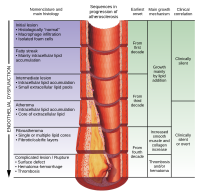
Photo from wikipedia
OBJECTIVE To determine the prevalence, progression, and modifiable risk factors associated with the development of diabetic retinopathy (DR) in a population-based cohort of youth-onset diabetes. RESEARCH DESIGN AND METHODS We… Click to show full abstract
OBJECTIVE To determine the prevalence, progression, and modifiable risk factors associated with the development of diabetic retinopathy (DR) in a population-based cohort of youth-onset diabetes. RESEARCH DESIGN AND METHODS We conducted a multicenter, population-based prospective cohort study (2002-2019) of youth and young adults with youth-onset type 1 diabetes (n = 2,519) and type 2 diabetes (n = 447). Modifiable factors included baseline and change from baseline to follow-up in BMI z score, waist/height ratio, systolic and diastolic blood pressure z score, and A1C. DR included evidence of mild or moderate nonproliferative DR or proliferative retinopathy. Prevalence estimates were standardized to estimate the burden of DR, and inverse probability weighting for censoring was applied for estimating risk factors for DR at two points of follow-up. RESULTS DR in youth-onset type 1 and type 2 diabetes is highly prevalent, with 52% of those with type 1 diabetes and 56% of those with type 2 diabetes demonstrating retinal changes at follow-up (mean [SD] 12.5 [2.2] years from diagnosis). Higher baseline A1C, increase in A1C across follow-up, and increase in diastolic and systolic blood pressure were associated with the observation of DR at follow-up for both diabetes types. Increase in A1C across follow-up was associated with retinopathy progression. BMI z score and waist/height ratio were inconsistently associated, with both positive and inverse associations noted. CONCLUSIONS Extrapolated to all youth-onset diabetes in the U.S., we estimate 110,051 cases of DR developing within ∼12 years postdiagnosis. Tight glucose and blood pressure management may offer the opportunity to mitigate development and progression of DR in youth-onset diabetes.
Journal Title: Diabetes care
Year Published: 2023
Link to full text (if available)
Share on Social Media: Sign Up to like & get
recommendations!